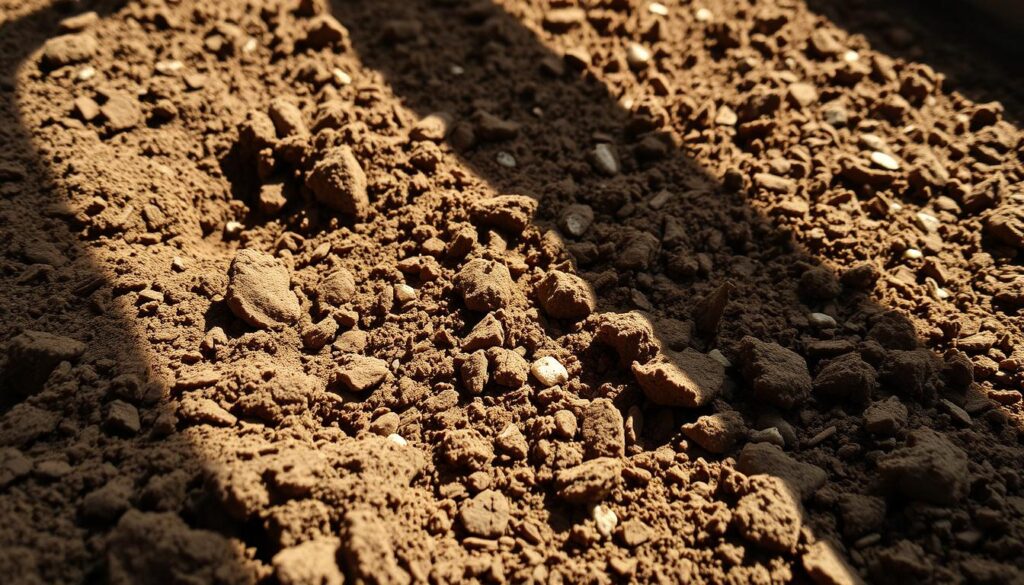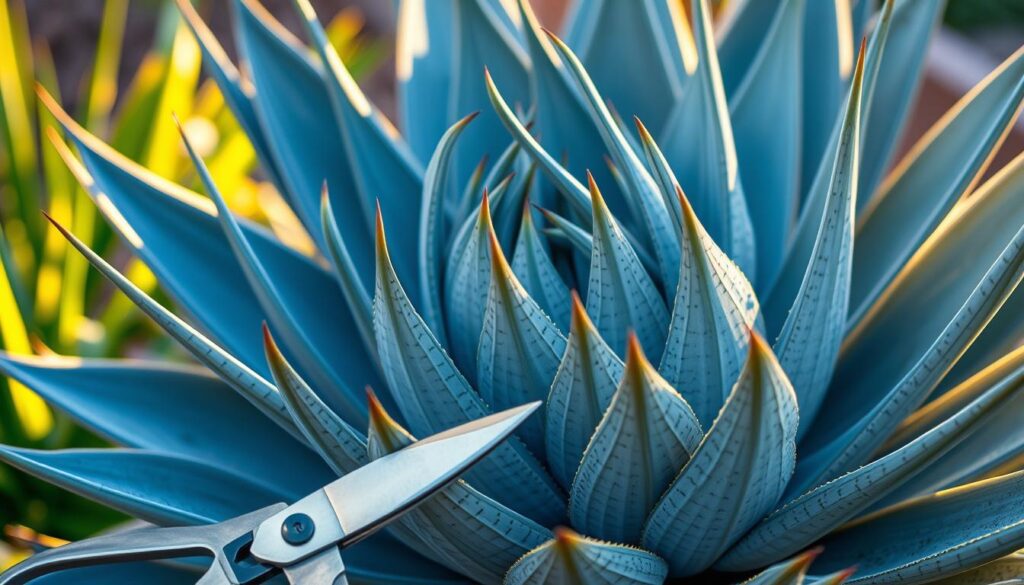Welcome to my ultimate guide on the threadleaf agave, a plant that has captivated my heart with its unique charm and versatility. As someone passionate about desert plants, I can attest that this succulent stands out for its striking architectural features and adaptability in various garden settings.
Whether you’re designing a modern garden or adding a touch of elegance to a container, the threadleaf agave is a stylish yet resilient choice. Its ability to thrive in different environments makes it a favorite among gardeners and designers alike.
In this guide, I’ll take you on a journey through the world of threadleaf agave, covering everything from its historical background to practical care tips. Drawing from reliable sources and my own experiences, I’ll share insights on growing techniques and cultural significance, ensuring you have all the knowledge needed to make the most of this incredible plant.
An Introduction to Threadleaf Agave
Discover the captivating world of the threadleaf agave, a plant steeped in history and adorned with striking beauty. My journey into understanding this succulent revealed its deep cultural roots and the symbolic meanings it holds in various traditions.
Historical & Cultural Background
In many cultures, the threadleaf agave has been a symbol of resilience and endurance. Historically, it has been used in traditional medicine, rituals, and as a source of fiber. Its versatility and adaptability have made it a cherished plant across different societies.
Distinctive Aesthetic Features
The threadleaf agave boasts mid-green to dark-green foliage, often accented with bronzy hues. One of its most striking features is the presence of white filaments along the leaf margins, adding a delicate texture to its robust structure. The plant’s symmetrical growth and sharp, striking tip make it a standout in any garden setting.
| Feature | Description |
|---|---|
| Color | Mid-green, bronzy, or dark-green |
| Foliage | Robust with white filaments on margins |
| Growth Form | Symmetrical with a striking tip |
Culturally, the threadleaf agave has been a symbol of strength and endurance. Its traditional uses range from medicinal applications to serving as a source of fiber. This plant’s rich history and versatility have made it a beloved choice in gardens worldwide.
Selecting the Ideal Location and Soil Preparation
When it comes to growing this stunning succulent, choosing the right spot and preparing the soil are crucial for its success. I always recommend selecting a location that offers ample sunlight, as this plant thrives in full sun exposure.
Benefits of Full Sun Exposure
Full sun is essential for promoting healthy growth and vibrant color. I suggest placing your plant in a spot where it can receive at least six hours of direct sunlight daily. This will help the leaves develop their characteristic bronzy hues and maintain their robust structure.

Optimizing Soil and Drainage Conditions
The soil needs to be well-draining to prevent water from pooling around the roots. A mix of sandy or rocky soil with a pH between 6.0 and 7.0 works best. I prepare the soil by adding organic matter like compost to improve drainage while maintaining the right acidity. Proper drainage ensures that the plant doesn’t suffer from root rot, a common issue in poorly ventilated soils.
Planting in a container can offer better control over soil conditions and drainage. Containers also provide flexibility in moving the plant to different locations based on sunlight needs. Whether you choose in-ground or container planting, consistent sun exposure and well-prepared soil are key to managing water effectively and ensuring the plant’s resilience.
Planting Techniques and Watering Guidelines
Planting a threadleaf agave is an exciting step in bringing this beautiful succulent into your garden. To ensure it thrives, follow these simple steps and watering tips.
Step-by-Step Planting Process
Start by selecting a spot with full sun and well-draining soil. Carefully remove the plant from its container, taking care not to damage the roots.
Gently place the plant in the ground, ensuring the crown stays above the soil surface to prevent rot. Space multiple plants about 2 to 3 feet apart to allow ample room for growth.
| Aspect | Guideline |
|---|---|
| Soil Preparation | Ensure soil is well-draining, ideally with a pH between 6.0 and 7.0. |
| Spacing | Plant 2 to 3 feet apart to accommodate mature size. |
| Crown Position | Keep the crown above ground to avoid rot. |
Watering Best Practices for Low Water Needs
Water only when the soil is completely dry, especially during winter when water needs are lower. Overwatering can lead to root rot, so always check moisture by inserting a finger into the soil up to the knuckle.
By following these guidelines, your threadleaf agave will thrive, bringing beauty and resilience to your garden.
Essential Threadleaf Agave Care: Fertilizing and Pruning
Keeping your threadleaf agave in top shape involves a few simple yet effective care practices. I’ve found that a balanced approach to fertilizing and pruning makes all the difference in maintaining its health and beauty.
Fertilizing Schedule Recommendations
To promote healthy growth, I use a low-nitrogen, slow-release fertilizer. Applying it in early spring and again in mid-summer provides the right nutrients without overloading the plant. This balanced approach ensures vibrant color and robust structure.
| Season | Fertilizer Application |
|---|---|
| Early Spring | Low-nitrogen, slow-release fertilizer |
| Mid-Summer | Second application of the same fertilizer |
Effective Pruning Methods for Healthy Growth
Pruning is essential for removing dead or damaged parts. I carefully trim with clean tools, making precise cuts close to the plant’s base. This prevents harm and encourages new growth. In winter, I reduce care, letting the plant rest.

By following these steps, your agave will thrive, bringing elegance and resilience to your garden.
Propagation Techniques: Seeds and Offsets
Expanding your succulent collection can be rewarding, especially with the threadleaf agave. This section explores two effective methods: seed propagation and offset separation.
Seed Propagation Process
Starting from seeds is a straightforward method. Collect seeds from a mature plant, ensuring they are dry and ripe. Sow them on a sandy, well-draining potting mix in a container. Provide warmth and indirect sunlight. Keep the soil moist but not soggy. Germination typically occurs within 1-3 months.
Offset Separation and Replanting
Offsets, or pups, grow around the base of mature plants. Use a clean, sharp knife to carefully separate them from the parent. Allow the pups to dry for a day to form a callus. Replant them in well-draining soil, ensuring the crown is above the soil. Water sparingly until roots develop. Spring is the ideal time for this process.
Both methods ensure consistent care and allow you to enjoy more of these beautiful succulents in your garden.
Unraveling the Lifecycle and Size of Threadleaf Agave
Understanding the lifecycle and size of the threadleaf agave is essential for any gardener looking to make the most of this stunning succulent. From its early growth stages to its mature form, this plant offers a fascinating journey that combines beauty with resilience.
Growth Stages and Timeline
The threadleaf agave’s lifecycle spans several years, progressing through distinct growth stages. It begins with germination, typically within 1-3 months after seed planting. The seedling stage follows, where the plant develops its first set of leaves. As it matures, the agave reaches its full size and eventually produces a magnificent flower spike.
Mature Dimensions and Foliage Variability
At maturity, the threadleaf agave can grow up to 2 feet in height and 2-3 feet in width, making it a compact yet striking addition to any garden. The foliage varies in color, often shifting to red hues when the plant is under water stress. One of the most remarkable features is the towering flower spike, which can reach heights of up to 8 feet in some cultivars.
| Growth Stage | Description | Timeline |
|---|---|---|
| Germination | Seed begins to sprout | 1-3 months |
| Seedling | First leaves appear | 6-12 months |
| Maturity | Full size achieved | 5-10 years |
| Flowering | Flower spike emerges | 10+ years |
By understanding these growth stages and dimensions, gardeners can better plan and care for their threadleaf agave, ensuring it thrives and brings beauty to their outdoor space for years to come.
Understanding Roots, Common Problems, and Disease Prevention
Root health is vital for the survival and beauty of your plant. A robust root system ensures proper nutrient uptake and overall resilience. However, I’ve noticed that many gardeners overlook the signs of root distress, which can lead to severe issues if left untreated.
Healthy Root Characteristics
A healthy root system is fibrous, allowing the plant to absorb moisture and nutrients efficiently. These roots are typically firm and light in color, indicating good health. However, they are prone to rot if the soil is too moist, making proper drainage essential.
Identifying and Solving Growth Issues
Common problems include root rot from overwatering or poor drainage. Check for dark, mushy roots or signs of nutrient deficiency like yellowing leaves. To prevent these issues, ensure your soil is well-draining and avoid excessive watering. If you notice any signs of root trouble, repot the plant with fresh soil and reduce watering until it recovers.
Regular observation and timely action can save your plant from severe damage. By understanding root health and addressing issues early, you can help your plant thrive and enjoy its beauty for years to come.
Pest Management, Toxicity, and Companion Planting
Keeping your garden healthy involves more than just watering and fertilizing. Managing pests, understanding toxicity, and choosing the right companion plants are essential for creating a thriving environment.
Managing Pest Infestations and Bugs
Common pests like spider mites and mealybugs can target this succulent. Look for signs such as fine webbing or cottony patches. I recommend using organic solutions like neem oil or insecticidal soap to address infestations early.
Toxicity Considerations for Pets and Humans
The plant’s sap contains compounds that can cause skin irritation and digestive issues in both pets and humans. Handle the leaves with care, and keep the plant out of reach of curious pets and children.
Selecting Ideal Companion Plants for Your Garden
Companion plants like desert marigold and red yucca complement this succulent well. They thrive in similar conditions and help deter pests naturally, enhancing the overall health of your garden.
Final Reflections on a Vibrant Agave Journey
Reflecting on my journey with the threadleaf agave, I’m reminded of the countless moments this plant has brought joy to my garden. From its striking architectural beauty to its resilience, it’s a true gem for any gardener. I’ve learned that proper care, including selecting the right location with full sun and using well-draining soil, is essential for its success.
One of the most rewarding experiences has been propagation. Whether through seeds or offsets, watching new plants grow is a testament to nature’s vitality. I encourage everyone to experiment with companion planting, as it not only enhances the garden’s beauty but also promotes a healthy environment for your plants.
Remember, gardening is a journey of learning and growth. Embrace the challenges and celebrate the small victories. With the right care and attention, your agave will thrive, becoming a vibrant and lasting addition to your garden. Happy gardening!
